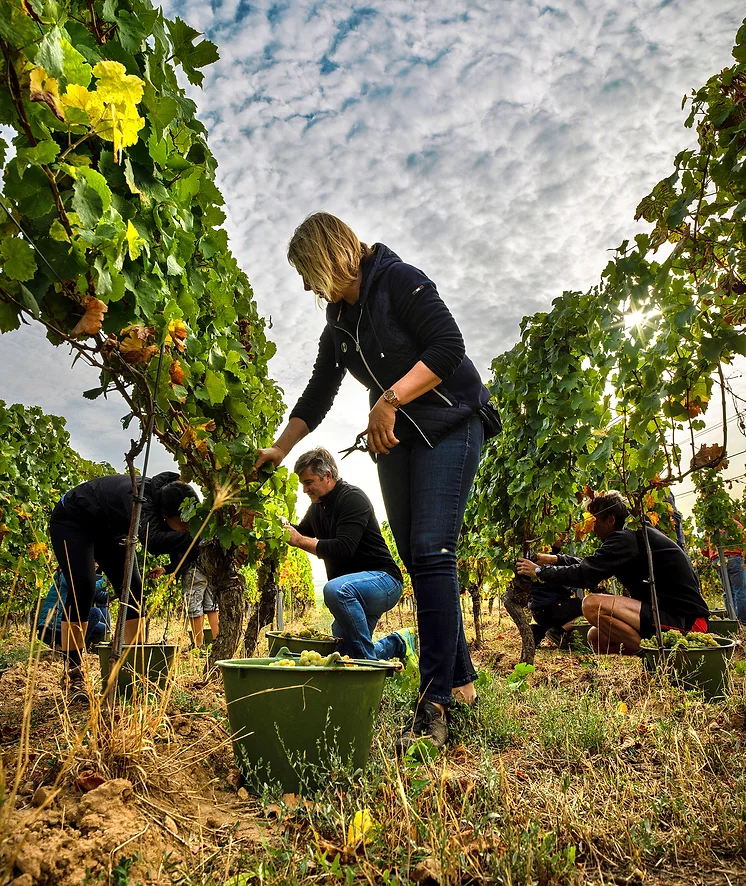
The Rheinhessen has had one of the most schizophrenic recent histories of any wine region I can think of.
The Rheinhessen is the largest wine region in Germany, with around 27,000 hectares or roughly 68,000 acres. While I think this is a relatively useless statistic to give on its own (do you have any idea what 68,000 acres looks or feels like?), this number may be useful in the context of other regions, like the Moselle, with roughly 7,700 hectares or the Rheingau, with about 3,000.

So yes, this is a large region, especially for Germany, but in the grand scheme of European winemaking, it’s still quite modest. Just to fling some more numbers at you: Champagne is about 34,000 hectares; Rioja and Tuscany double that at around 65,000. Bordeaux rumbles along with over 100,000.
Now, if the scale is easy enough to digest, the gestalt, the grand sense of the Rheinhessen is a bit trickier to pin down. What is this place about, really?
The truth is the Rheinhessen has one of the most schizophrenic recent histories of any wine region I can think of. If the Nahe emerged from obscurity, the Rheinhessen emerged from indignity. Only some 20 years ago, Stephen Brook wrote in his provocatively titled book, The Wines of Germany, the following: “The Rheinhessen, which produces about one-quarter of all German wine, is the most maligned of Germany’s wine regions. And with good reason. Although there are some districts that are capable of producing magnificent wines, there are also vast tracts of vineyards planted on flat fertile soils that are only suited to the churning out of utterly nondescript wines. This particularly applies to the southern part of the region, known as the Wonnegau.”
Today, the Rheinhessen is with a doubt one of the most elite wine regions in all of Germany. And “this particularly applies to the southern part of the region, known as the Wonnegau,” where a rather small estate named Keller has almost single-handedly changed the reputation of this region as a whole, to say nothing about the estate’s influence on the perception of German wine around the world.
So the question really is: How in the hell did this happen? A complete 180 in the span of only two decades? I have no idea, but here are some guesses.
First, the scale: As stated, this is a large region capable of holding countless narratives at the same time. There is no reason why many unscrupulous large producers wouldn’t take advantage of its plump fertility to make oceans of plonk. Nor is there any reason why, simultaneously, small and passionate growers couldn’t focus on the single-vineyard history of this region, bringing it back to the fame it had in the medieval ages.
 The second factor in this turnaround is, I think, global warming. I remember talking with Klaus Peter Keller in the early days of our friendship, commenting on how it was such a bold and brave move for him and Julia to focus on dry wines from these top sites while his father had made such a name for the estate with his sweeter wines.
The second factor in this turnaround is, I think, global warming. I remember talking with Klaus Peter Keller in the early days of our friendship, commenting on how it was such a bold and brave move for him and Julia to focus on dry wines from these top sites while his father had made such a name for the estate with his sweeter wines.
K.P. quickly corrected me, saying that his father made amazing dry wines when he could. It was just too cold most often to achieve the ripeness needed for balanced dry wines in the Wonnegau.
There is no doubt that Julia and Klaus Peter are passionate geniuses with a rare gift; there is also little doubt that they would not have been able to make the wines they’ve made without the help of Mother Nature. As K.P. will say again and again: “Nature is always the boss.”
Today, I have the sense that everything and anything happening in German viticulture is happening somewhere in the Rheinhessen. The diversity of soils is profound: The east has the “Roter Hang;” the west which borders the Nahe shares some of its volcanic soils; the south, center and north have large swaths of limestone. The region is vast enough to support this diversity. There are large estates more commercially minded, but there are also tiny, family-run estates that are focusing on making the greatest classical wines they can, both dry and sweet. Some estates are focusing on the grand diversity of the Rheinhessen’s varieties — one of the region’s least-discussed strengths — by producing great Riesling as well as great Silvaner, Scheurebe, Rieslaner, and Pinot Noir. More recently, Weissburgunder, Grauburgunder, and even Chardonnay have made some very serious inroads here. Truly epic sparkling wine can be made here, which has been proven over the last few decades by Sekthaus Raumland and, very recently, expanded upon in truly profound ways by the young Felix Keller, who is already making simply mind-boggling wines at his family’s already-famous estate. Like mother and father, like son, I guess? In the last five to ten years, a more natural wine movement has also planted its flag here, taking advantage of the cool interior of the Rheinhessen and its abundant limestone soils.
In short, there is seemingly nothing the Rheinhessen cannot do and cannot do very well. This, of course, is a great asset, but it is also in a way its main liability, at least in terms of the market: How do you tell one simple convincing narrative, when the region and the truth is so damn broad and complicated?
